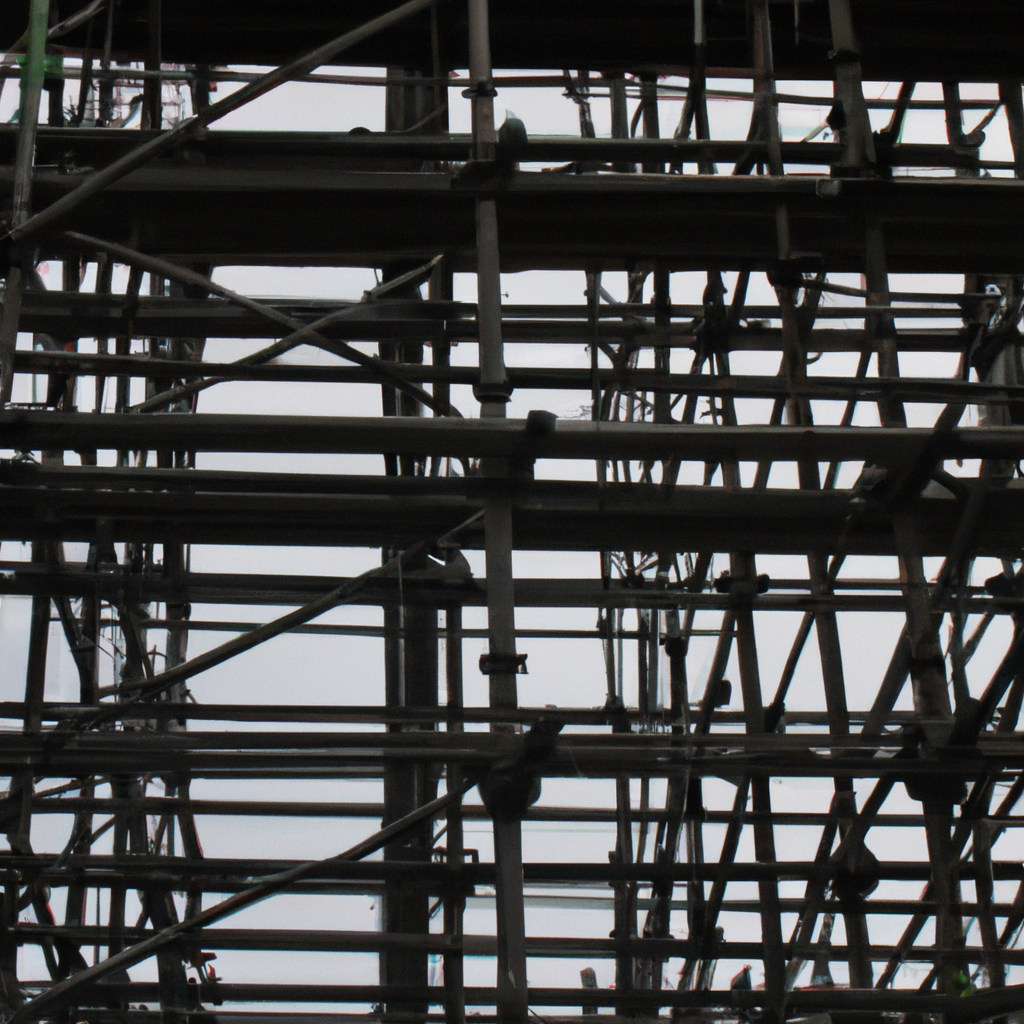Scaffolding is an essential component of construction and maintenance projects. It provides workers with a safe and stable platform to perform their tasks at elevated heights. However, despite its importance, scaffolding can pose significant safety risks if not properly installed, inspected, and maintained. In this comprehensive guide, we will delve into the hidden dangers of scaffolding and provide valuable insights on how to identify and mitigate these risks effectively. By implementing the strategies outlined in this article, you can ensure the safety of your workers and minimize potential accidents and injuries.

Understanding the Importance of Scaffolding Safety
Scaffolding accidents can result in severe injuries and even fatalities, making it crucial to prioritize safety measures. Falls from scaffolding are one of the leading causes of construction-related accidents, highlighting the need for a comprehensive approach to mitigate risks. By creating a safe working environment, employers can protect their workers and comply with regulatory requirements.
Common Safety Risks Associated with Scaffolding
- Instability: One of the primary safety risks associated with scaffolding is its instability. Scaffolding must be properly erected and secured to prevent it from collapsing or shifting unexpectedly. Factors such as uneven ground, strong winds, or inadequate anchoring can compromise its stability, posing a significant danger to workers.
- Inadequate Platform Design: Another common safety risk is related to the design and construction of the scaffolding platform. Insufficient or poorly constructed platforms can lead to accidents, such as slips, trips, and falls. It is essential to ensure that the scaffolding platform is wide enough to allow workers to maneuver comfortably while carrying out their tasks.
- Lack of Fall Protection: Failure to provide adequate fall protection measures is a major safety risk in scaffolding operations. Employers must ensure that guardrails, safety nets, and personal fall arrest systems are in place to prevent workers from falling from heights. Regular inspections and maintenance of these safety devices are also essential to ensure their effectiveness.
- Inadequate Training and Supervision: Insufficient training and supervision can contribute to scaffolding accidents. Workers must receive proper training on scaffolding erection, dismantling, and safe work practices. Supervisors should actively monitor work activities, identify potential hazards, and enforce safety protocols to minimize risks.
Identifying Safety Risks in Scaffolding
To effectively identify safety risks in scaffolding, a comprehensive assessment of the entire system is necessary. Here are some key areas to focus on:
- Scaffolding Design and Construction: Examine the design and construction of the scaffolding to ensure it meets industry standards and regulatory requirements. Look for any signs of instability, such as loose connections or inadequate bracing.
- Platform and Access Points: Evaluate the scaffolding platform and access points for any signs of damage or defects. Check for proper guardrails, toeboards, and secure access ladders or stairways.
- Anchoring and Stability: Verify that the scaffolding is securely anchored and stable. Ensure that it is properly tied to the building or structure to prevent tipping or shifting.
- Weather Conditions: Assess the impact of weather conditions on scaffolding stability. Strong winds, rain, or snow can pose additional risks. Temporary measures, such as wind barriers or weatherproof covers, may be necessary to maintain a safe working environment.
- Fall Protection Systems: Inspect the effectiveness of fall protection systems, including guardrails, safety nets, and personal fall arrest systems. Look for any signs of damage or wear and ensure that they are properly installed and regularly maintained.
Mitigating Safety Risks in Scaffolding
To mitigate safety risks in scaffolding, a proactive and systematic approach is required. Here are some strategies to consider:
- Training and Education: Provide comprehensive training to all workers involved in scaffolding operations. Ensure they are familiar with safe work practices, hazard identification, and emergency procedures. Regular refresher courses can help reinforce this knowledge.
- Regular Inspections: Implement a regular inspection schedule to identify and address potential safety risks promptly. Inspections should cover all aspects of scaffolding, including its components, stability, and fall protection systems.
- Maintenance and Repairs: Establish a maintenance program to address any identified issues promptly. Regularly inspect and maintain scaffolding components, including connections, platforms, and guardrails. Promptly repair or replace any damaged or faulty elements.
- Supervision and Monitoring: Assign competent and trained supervisors to oversee scaffolding operations. They should actively monitor work activities, identify potential hazards, and enforce safety protocols. Regular site visits and toolbox talks can help reinforce safe work practices.
- Communication and Reporting: Encourage open communication among workers regarding safety concerns or potential hazards. Implement a reporting system that allows workers to report unsafe conditions or near misses without fear of reprisal. Address reported issues promptly and take corrective actions as necessary.
Conclusion
In conclusion, prioritizing safety in scaffolding operations is of paramount importance to protect workers and prevent accidents. By understanding the common safety risks associated with scaffolding and implementing the strategies outlined in this guide, you can identify and mitigate these risks effectively. Remember, scaffolding safety requires a collective effort from employers, supervisors, and workers to create a secure working environment. Stay vigilant, conduct regular inspections, and prioritize training and education to ensure the well-being of everyone involved in scaffolding activities.


